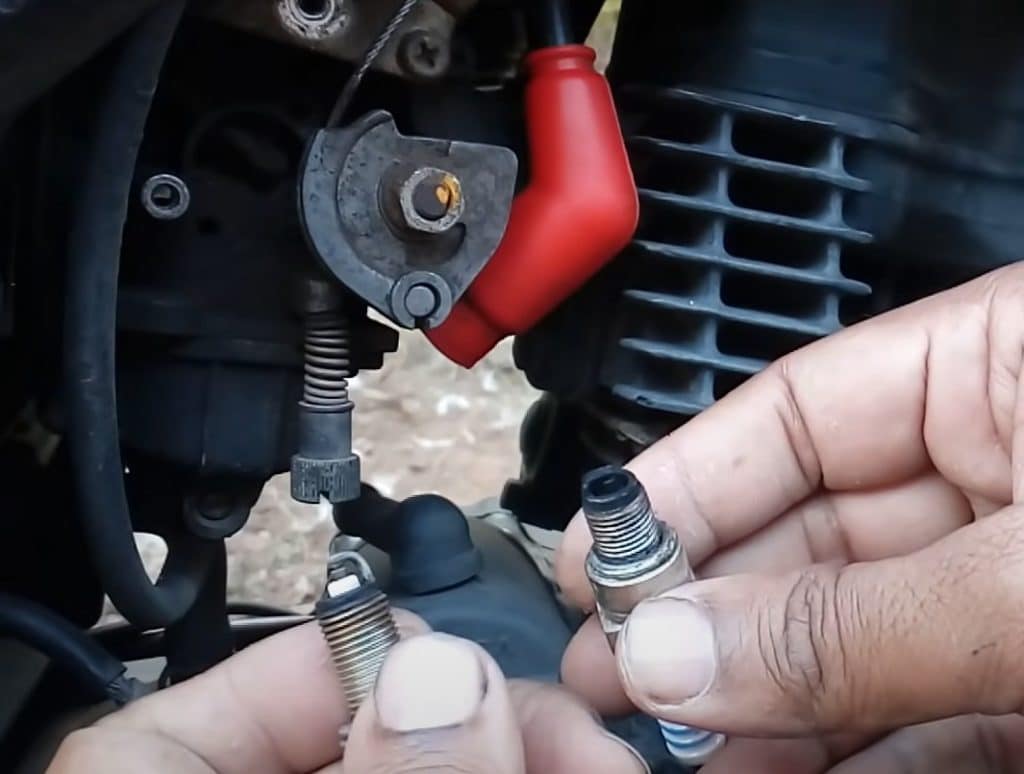If you are a vehicle owner or someone who works with automobiles, then you may have come across the term “E3 spark plug problem.” Spark plugs are an essential component of an engine that plays a critical role in starting and running your vehicle. Therefore, any issue with the spark plugs can cause significant problems that could result in costly repairs and even engine failure.
E3 spark plugs are designed to offer superior performance, fuel efficiency, and durability compared to traditional spark plugs. These plugs incorporate advanced technology to enhance combustion and reduce emissions, making them a popular choice among car enthusiasts and mechanics.
In this article, we will provide a comprehensive overview of the E3 spark plug problem, including the causes, symptoms, and potential solutions. So, please keep reading this article.
Common E3 Spark Plug Problems
E3 spark plugs are designed to provide better performance, fuel efficiency, and longer lifespan compared to traditional spark plugs. However, just like any other automotive part, E3 spark plugs can encounter problems. Here are some of the common problems of E3 spark plugs:
Poor Electrical Connection
Poor electrical connections can be a common reason for your E3 spark plug failure. It can be hard to spot and solve on your own, but with some inspection and steps, you can get to the bottom of the problem quickly.
First, check if the spark plug is connected correctly and that there is no corrosion or insulation damage. If it is plated correctly, then you likely don’t have an electrical connection issue. However, if it is not connected properly or is corroded in any way, then you may need to use a special wire brush to clean the affected area before reconnecting it and testing it again.
You should also take a look at the spark plug wires and make sure they are securely attached; if they’re not, they could cause arcing or other electrical issues which could lead to an engine misfire or other problem that can affect performance. If necessary, replace or repair the wires and test them for reliable performance.
Faulty Ground Wires
Ground wires are responsible for providing a direct route for electricity to travel from the battery of your vehicle to its starter, alternator and distributor. When these essential components don’t work correctly, they can prevent the spark plug from igniting a proper spark that allows fuel to be combusted inside the engine cylinder.
To identify if faulty ground wires are causing your spark plug problem, start by looking for signs of corrosion or frayed wiring. You may also experience any of the following: persistent engine misfire; poor electrical connection; low voltage; and broken insulation.
To fix this issue, you’ll need to disconnect the battery from your car and clean any corroded areas using a brush or sandpaper. If that doesn’t do the trick, then you may need to replace either a ground cable, jumper wire or post in order to get your engine running again. Once all connections are securely tightened and checked for proper resistance, you should hopefully have a working spark plug once more!
Broken Insulation
If your vehicle’s spark plug has broken insulation, you could be dealing with some pretty major issues. When insulation is broken, it can cause spark plugs to become electrically charged and increase the chance of an engine misfire.
This is caused by a number of things, including improperly installed spark plugs, over-tightening of the spark plug, or a spark plug with worn or damaged insulation. If the insulation on your spark plug is broken, it can cause misfires and poor performance. Fortunately, this problem can be easily fixed. If the insulation is worn or damaged, it should be replaced. If it is improperly installed, simply re-torque the spark plug to the manufacturer’s specifications.
If you’re dealing with broken insulation on your spark plugs, there aren’t many solutions besides replacing them. If you find that one of your spark plugs has this issue, it’s best to replace it immediately with a new one from E3 Spark Plugs, as they are specifically designed to reduce risk of electrical failure due to their superior design and materials used in their construction. By taking these steps and using only E3 Spark Plugs for replacements, you’ll ensure that your vehicle runs as efficiently and effectively as possible!
Low Voltage Issues
One of the main causes of this is a bad alternator or worn out battery and can be prevented by maintaining the charging system and checking for any malfunctioning parts.
Another common cause of low voltage in an E3 spark plug is a worn or fouled spark plug. Over time, spark plugs can become worn or fouled, which can cause a misfire and lead to low voltage. To fix this issue, you will need to replace the spark plug with a new one.
A weak or failing ignition coil can also cause low voltage in an E3 spark plug. The ignition coil is responsible for creating the high voltage spark that is needed to ignite the fuel-air mixture in the engine. If the ignition coil is weak or failing, it will not be able to create the needed spark, which can lead to low voltage. To fix this issue, you will need to replace the ignition coil with a new one. Low voltage issues in an E3 spark plug can be annoying, but they are usually easy to fix.
Engine Misfire
This occurs when the spark plug fails to ignite the fuel in the combustion chamber, resulting in an incomplete combustion cycle and power loss. The most common cause of engine misfires is faulty spark plugs, which can be caused by a variety of issues, such as wear and tear, incorrect gap, or inadequate voltage.
To fix this problem, you should first check the spark plug gap. The gap should be set to the manufacturer’s recommended specifications. If the gap is too wide, it can cause the spark to dissipate, resulting in an incomplete combustion cycle and engine misfire. If the gap is too narrow, it can cause the spark to cross-fire, resulting in an engine misfire.
Next, you should check for any signs of wear and tear on the spark plug. If the spark plug is worn out, it can cause an engine to misfire. If the spark plug is damaged or has broken parts, it should be replaced.

Symptoms of E3 Spark Plug Problems
E3 spark plugs are a type of spark plug that has been designed to increase the efficiency of the combustion process. They are designed to burn fuel more completely than traditional spark plugs, resulting in improved performance, lower emissions, and longer engine life. While these spark plugs are reliable and durable, they can still develop problems. It is important to recognize the signs of spark plug problems and repair or replace the spark plugs as soon as possible in order to avoid further engine damage.
Common symptoms of E3 spark plug problems include:
1. Poor Engine Performance – One of the first signs of spark plug problems is a decrease in engine performance. If your vehicle’s acceleration feels sluggish, you may be having spark plug issues. This can be caused by a fouled spark plug or one that is not firing correctly.
2. Check Engine Light – A check engine light may appear if the spark plugs are not working correctly. This light will alert you to the fact that there is a problem that needs to be addressed.
3. Hard Starting – Spark plugs are essential for starting the engine. If your vehicle is having difficulty starting or takes longer than usual to start, you may be having spark plug problems.
4. Rough Idling – When the spark plugs are not firing correctly, the engine may begin to idle rough or even stall. This is a sign that there is a problem that needs to be addressed.
5. Poor Fuel Economy – Spark plugs that are not working correctly can lead to decreased fuel economy. If your vehicle is not getting the same fuel economy as it used to, it could be a sign of spark plug issues.
Tips for Maintaining E3 Spark Plugs
Maintaining proper care of your E3 spark plugs is essential in order to keep them functioning efficiently. Here are some tips that can help you take better care of your plugs:
- Check the spark plug gap – The gap between the plug’s electrode and the porcelain tip should be set to the manufacturer’s recommended distance, usually, around 0.035 inches, as too wide or too narrow will affect the spark’s performance.
- Replace as needed – Spark plugs tend to last approximately 30,000 miles or 2 years on average, but it is important to note that this may vary based on different factors such as fuel type or engine load.
- Clean periodically – This involves removing built-up carbon deposits from the plug’s electrodes with a wire brush and wiping them down with a rag. You should also use compressed air (or an aerosol contact cleaner) to blow any debris from the internal parts of the plug and boot.
By taking good care of your E3 spark plugs you can ensure that they are working properly and providing a smooth-running engine with improved performance, fuel economy, reliability, and longevity.
FAQs
How long does E3 spark plugs last?
How often you change your car’s spark plugs depends on the type of plug you use and how you drive the car. Naturally, the grip is better and the comfortable driving position is good. E3 automotive spark plugs carry a warranty of 100,000 km or 5 years from the date of purchase.
Can you clean E3 Spark Plugs?
Use a socket wrench to loosen the spark plug by turning it clockwise. Once removed, check the electrode tip and ceramic insulator for wear or wear. Spray the dirty brush with brake cleaner and let it soak for about 10 minutes.
Are E3 Spark Plugs good for turbo engines?
Designed for high-power applications, the plug includes a patented E3 ground electrode for maximum heat and edge-to-edge, plus insulation to keep electronics powered.
What is the truth about E3 Spark Plugs?
E3 spark plugs have a special ground electrode that promotes turbulence in the air/fuel mixture. This leads to more efficient combustion of the available fuel with the benefit of improved horsepower, fuel efficiency and reduced emissions.
What type of spark plugs last the longest?
Platinum is harder, and has a higher melting point than nickel alloy. This allows the spark plug to retain a sharp edge for a long time. Longevity is the main advantage of platinum spark plugs – they are usually replaced at around 60,000 kilometers but can last up to 100,000 kilometers.
Conclusion
Troubleshooting E3 spark plug problems can be tricky and time consuming but it can be done with patience and attention to detail. Poor electrical connections, faulty ground wires, broken insulation, low voltage and engine misfiring can all cause trouble.
Taking the time to identify the issue and make the appropriate fix or adjustment can save time and money, as well as give you peace of mind. With the right understanding and the right tools, E3 spark plug problems can be fixed quickly and so that you can get back on the road.

